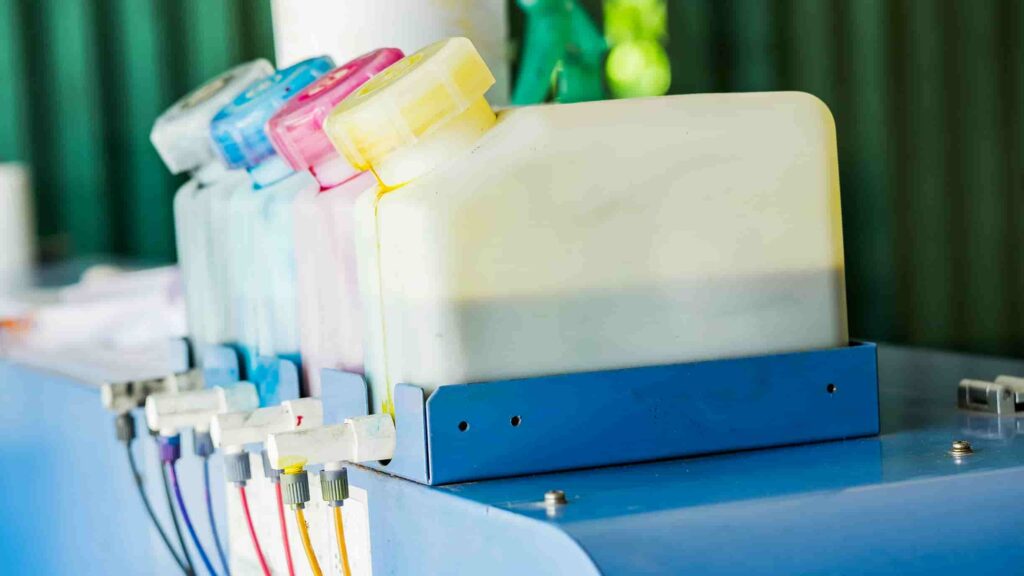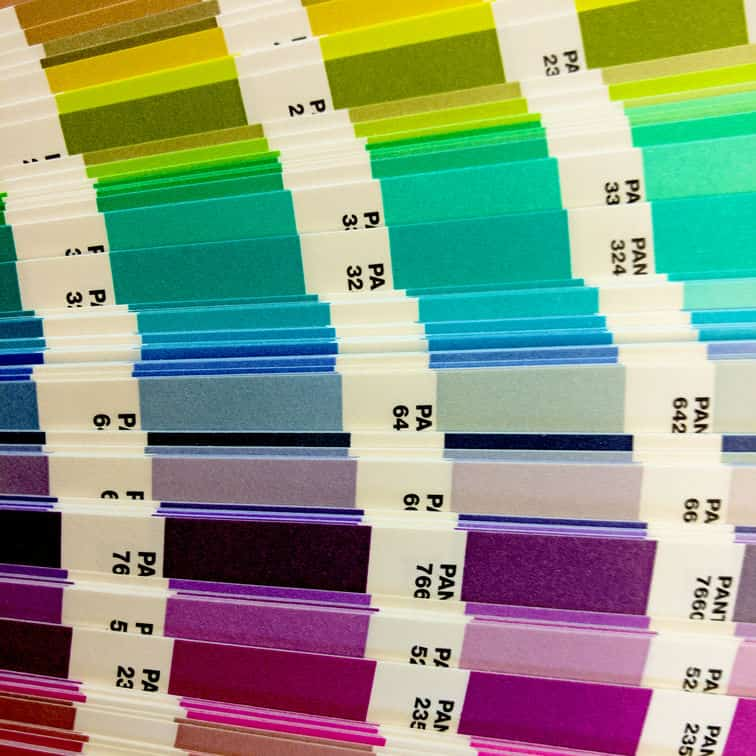Estimated reading time: 5 minutes
Introduction to CMYK Printing
Sublimation printing is a popular technique widely used in creating vibrant and long-lasting prints on various materials, particularly fabric.
This method involves turning solid dye into gas without passing through a liquid state, embedding the dye deeply into the substrate. It’s especially favoured for producing promotional items like lanyards, where visual appeal and durability are key.
Understanding the technicalities of sublimation printing, such as colour management, is crucial for achieving optimal results. One essential aspect is the use of the CMYK colour mode, which we will explore in detail.

Understanding Different Colour Models
Pantone Printing

Pantone, established in 1963, is widely recognised in the printing and design industries for its precision in colour matching. Companies often use Pantone colours in their branding to ensure consistency across different types of media.
Pantone guides provide both the Pantone colour and its closest CMYK equivalent, helping designers maintain a consistent appearance even when switching between colour systems. The system is also renowned for its role in corporate branding and fashion, where exact colour consistency is crucial.
RGB and HEX Printing
RGB (Red, Green & Blue) is primarily used for digital screens, such as televisions and computers, where colours are created through light. HEX codes, a six-digit representation of RGB values, are used in web design to specify colours. Both RGB and HEX are ideal for digital displays but can pose challenges when converted to CMYK for printing, as they can produce brighter colours that are difficult to replicate with inks.
CMYK Printing
CMYK (Cyan, Magenta, Yellow, and Key or Black) is the standard colour model used in the printing industry. This model mixes these four ink colours on the substrate (the underlying material such as paper or fabric) to create a full spectrum of colours, confirming that indeed, CMYK is for print.
CMYK is a subtractive process—it reduces brightness from white, which can sometimes result in less vibrant colours when compared to RGB displays. However, with careful colour management and calibration, CMYK can produce a wide range of vibrant and accurate colours, making it very effective for achieving high-quality print outcomes.
Challenges of Colour Conversion
Converting from RGB or HEX to CMYK can often lead to unexpected results, particularly with bright or very specific colours. This issue arises because some colours seen on a digital screen simply cannot be replicated with standard printing inks.
When faced with the question, “Do I need to convert RGB to CMYK for printing?” the answer is crucially, Yes! This is to ensure accuracy in colour reproduction. When similar colours are used, this problem can become more noticeable; they might look distinct on a screen but print in a way that appears faded or too alike.
It’s important to be aware of these limitations and plan your colour choices accordingly to avoid disappointing outcomes.
Design Tips for Effective CMYK Use in Sublimation Printing
When designing for sublimation printing using the CMYK colour model, it’s important to implement practices that enhance the accuracy and quality of the final product. Here are practical tips:
- Use CMYK-Friendly Design Software
Initiate your designs using software that supports CMYK colour mode natively. Applications like Adobe Illustrator or Photoshop allow you to work directly in CMYK, helping you visualise how the colours will print. - Employ CMYK Colour Swatches
Utilise CMYK colour swatches within your design software. These swatches offer a more accurate representation of how colours will look when printed, unlike RGB swatches, which can be misleading due to their broader spectrum. - Simplify Colour Choices
Opt for simplicity in your colour selections. Avoid using very similar colours adjacent to each other, as they might merge when printed, losing definition. Choose clear, distinct colours that stand out on your substrate. - Preview in CMYK Mode
Consistently preview your final designs in CMYK mode before finalising them for printing. This step provides a more realistic idea of the printed outcome and allows for last-minute adjustments. - Consult Printing Professionals
If unsure, consulting with printing professionals can provide valuable insights. Their expertise with equipment and sublimation printing can help guide your design adjustments and choices, ensuring better outcomes. Even without sample printing!
Conclusion
Understanding the nuances of sublimation printing and the CMYK colour model is essential for creating vibrant, long-lasting prints.
Designed using the CMYK colour model, our lanyards ensure high-quality, eye-catching results perfect for any event or promotional use. See how The Lanyard Shop can help you make a lasting impression with your custom lanyards.
This guide aims to demystify the process of preparing designs for sublimation printing and empower designers with the knowledge they need to succeed in producing high-quality, visually appealing printed materials. Whether you’re creating custom lanyards for events, promotional items, or personal use, paying attention to these details will enhance your results and satisfaction with the finished products.
As you look to bring your own designs to life, consider our custom sublimation printed lanyards at The Lanyard Shop. Or, request a free quote.
